► Lanzador is first all-electric Lambo
► Brand’s EV due on sale in 2028
► Raised ride-height, 2+2 grand tourer
If anyone was going to build a car as niche as a 2+2, raised ride-height electric GT, it was going to be Lamborghini. The new Lamborghini Lanzador electric car is a design study concept for the upcoming ‘fourth model’ from the Italians.
Having made its European debut at the 2023 IAA Munich motor show, it previews the EV that will soon be joining the hybrid V12 Revuelto, the soon-to-be-replaced Huracan and the commercial-banker Urus in the Lamborghini line-up. It’ll become the fourth model line.
At this stage, the concept offers a hint of what the production car will look like when it appears in 2028. But Lamborghini insists the Lanzador isn’t vapour-ware as the production version is likely to stay faithful to this design: Sant’Agata calls it a ‘concrete vision’ of what an electric Lamborghini will look like later this decade.
You can understand why. There aren’t any ridiculous design elements that don’t look ready for the road, with the exception of how much tyre you can see from the rear, and even the rear seats look vaguely useful.
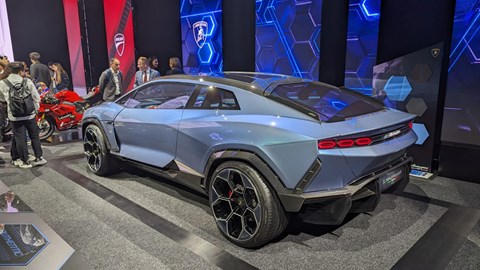
Being all-electric, the car is the sort of significant step-change that all manufacturers are making but that somehow feels even more significant here.
There is logic at play at why the brand has gone for this particular type of model, as the firm felt that the technology for an electric supercar isn’t quite there yet. Rouven Mohr, Lamborghini’s chief technical officer, explained that ‘at the moment, in the super sport segment, the full electric car is still not the best nor the first choice, from my point of view. It’s a little bit different in the more daily use segment. The disadvantages of electrification are not so relevant compared to the super sports.’
But presumably the Lazador is still fast?
Detailed technical aspects are thin on the ground at the moment, not wholly unexpected given that it’s a concept car. Top speed isn’t released but will apparently meet the expectation of a Lamborghini customer. We don’t know the battery size or range (Lamborghini promises a ‘long range’, probably from a 100kWh+ battery), but we do know that it’s got all-wheel drive thanks to twin electric motors with a peak power of ‘over one megawatt’, which works out at more than 1340bhp.
That might not sound like much in an era when the likes of the Rimac Nevera can muster nearly 2000bhp, but the Lanzador isn’t going after that sort of even more rarefied market. For a ‘daily use car’, it’s probably enough.
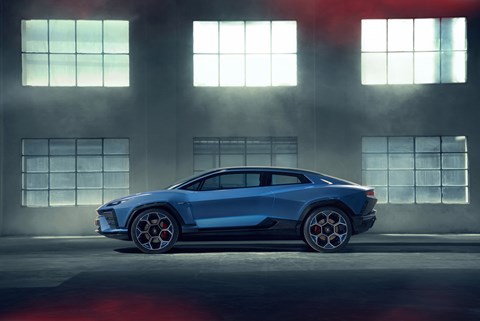
Sounds decent. And hopefully bodes well for the driving experience.
Exactly – it still needs to be exciting. Lamborghini and its three key senior execs – CEO Stephan Winkelmann, Mohr and designer Mitja Borkert are categoric every time you meet them that any Lamborghini must stay true to the brand DNA.
Even though this is a show car, Mohr is still excited about the potential it shows. ‘We can do a lot of things that you cannot do with a combustion engine’, in terms of wheel speed control and vehicle dynamic control systems. ‘We believe that if we want to define the new driving experience of an electric Lambo, we have to enter this field [dynamic control] in a very strong way.’
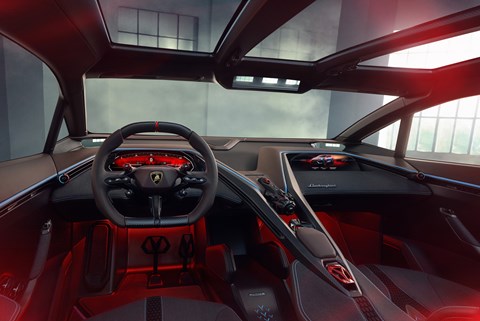
There’s a fresh abbreviation for the new dynamic control system – LDVI stands for Lamborghini Dinamica Veicolo Integrata – that will appear in the production Lanzador as well as other series Lambos, which will be crucial in keeping a check on all the various sensors and actuators that come with electric performance cars.
Multiple drive modes are available offering a myriad of possibilities, almost to the point where Mohr and his team are dialling back on the options. He doesn’t want the owner to be swamped in set-up tweaks, preferring to rationalise them so the driver can focus on the task in hand.
It’s clear that even though the Lanzador points towards a more GT-focused Lamborghini, Mohr and his team won’t let it become flabby through corners. Weight is an issue that Lamborghini is looking at closely – Mohr has ‘a very ambitious target weight for the production car’ and is promising it’ll be lighter than some hybrid cars in the class. As the Lanzador rides on air suspension and has rear-wheel steer, it should be possible to make it feel more agile than its heft would suggest.
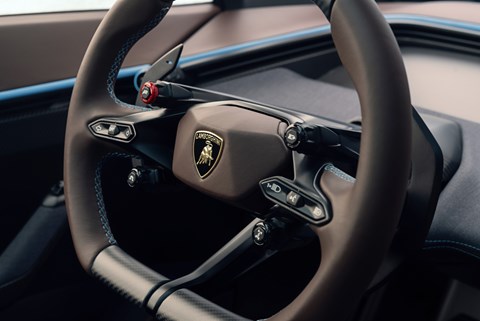
The Lanzador’s aero is also quite trick and points the way to future technology on the super sports cars. Borrowing smart aero from the Huracan Performante and Aventador SVJ, the Lanzador builds on the knowledge gleaned from those cars with its rear wing and blown diffusor design. Crucially for a range-sensitive electric car, Lamborghini is claiming it provides downforce without drag, thanks to a system of air outlets and louvers at the front and rear.
This gives the necessary road holding, but battery cooling is also crucial in the Lanzador’s repeatable performance. It isn’t a track car but it has to meet certain performance criteria and Mohr promises ‘the battery cooling will be the best in the market’.
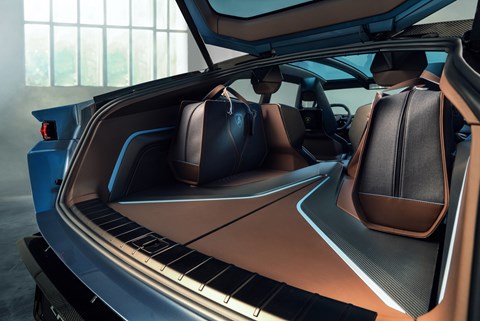
The car doesn’t get the artificial gearshift of some electric cars, like the Hyundai Ioniq 5 N. Mohr isn’t convinced about this technology yet because he feels it’s a bit ‘old-fashioned’ and tries too hard to mimic an ICE car, rather than develop a new way for the electric future. Instead, he promises a ‘surprise’ from the car’s steering wheel paddles.
Presumably there are other green bits, other than the batteries?
Like most electric cars, Lamborghini promises the Lanzador will push the boundaries for the green agenda, right down to the textiles used. The sustainable materials, all made in Italy and therefore saving on the delivery miles, range from Merino wool (er, sourced from Australian sheep…) to eco-tanned leather that uses recycled water from the olive oil industry. Even underneath the stuff you can touch is covered, as Lamborghini has used 3D-printed recycled fibres in the foam for the seats.
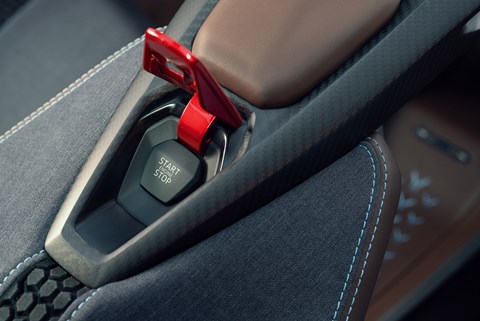
Synthetic fibres are made from recycled plastic and regenerated carbon is currently under development to see if carbon fibre can be made more environmentally friendly. Every manufacturer is promising this, but to see someone like Lamborghini engage with it is encouraging.
So when will we see the real thing?
With a launch date not until 2028, it’s going to be a while yet. But unlike when Lamborghini built the gorgeous Estoque concept in 2008 and then never got it into production, the Lanzador is on a much firmer footing. The Urus has been a huge commercial success for the firm and Lamborghini execs know this will only add to that. The Lanzador is coming.
‘The Lanzador is our first EV and the first in a new bodystyle for us,’ CEO Stephan Winkelmann told CAR at a briefing in January 2024. ‘It’s something of a new design language. Our studies suggest the bodystyle was accepted – the design is recognisable as a Lamborghini, but we need to deep-dive much more on the electrification. We will do a clinic this year with Lanzador. My big open topic on this side is, if you look at the car, you want to buy it today. But we need to project it forwards into the next five/six/seven years.
‘The power output is important. At least one megawatt, that is for sure. The combination of repeated acceleration, top speed and range – they must all be at the highest level. Range we have to work on at Lamborghini. We might have a bit of a discount because our customers have a lot of cars in their garage, so they are not dependent on one car to do all their daily activities. But for repeated acceleration, it is almost a commodity for us.’